Your search for 'fire'
returned
261 results.
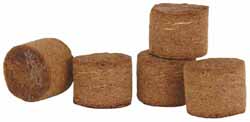
|
19 gauge , .636" ideal for .626" bore, .500" thick fibre wad, 500, by Circle Fly Wads
The Gauge System in Shotguns: "Gauge" is a archaic English method of measurement of bore diameter based on the quantity of lead round balls of a certain size that would equal one pound in weight. For instance, a 12 gauge shotgun has a bore diameter of .729", and 12 lead round balls of this diameter will weigh one pound. Thus, the smaller the numbe
|

|
20 gauge , .625" ideal for .615" bore, .125" over powder card, 1000, by Circle Fly Wads
The Gauge System in Shotguns: "Gauge" is a archaic English method of measurement of bore diameter based on the quantity of lead round balls of a certain size that would equal one pound in weight. For instance, a 12 gauge shotgun has a bore diameter of .729", and 12 lead round balls of this diameter will weigh one pound. Thus, the smaller the numbe
|

|
20 gauge , .625" ideal for .615" bore, .025" over shot card, 1000, by Circle Fly Wads
The Gauge System in Shotguns: "Gauge" is a archaic English method of measurement of bore diameter based on the quantity of lead round balls of a certain size that would equal one pound in weight. For instance, a 12 gauge shotgun has a bore diameter of .729", and 12 lead round balls of this diameter will weigh one pound. Thus, the smaller the numbe
|

|
20 gauge , .625" ideal for .615" bore, .500" thick fibre wad, 500, by Circle Fly Wads
The Gauge System in Shotguns: "Gauge" is a archaic English method of measurement of bore diameter based on the quantity of lead round balls of a certain size that would equal one pound in weight. For instance, a 12 gauge shotgun has a bore diameter of .729", and 12 lead round balls of this diameter will weigh one pound. Thus, the smaller the numbe
|

|
24 gauge , .589" ideal for .579" bore, .125" over powder card, 1000, by Circle Fly Wads
The Gauge System in Shotguns: "Gauge" is a archaic English method of measurement of bore diameter based on the quantity of lead round balls of a certain size that would equal one pound in weight. For instance, a 12 gauge shotgun has a bore diameter of .729", and 12 lead round balls of this diameter will weigh one pound. Thus, the smaller the numbe
|

|
24 gauge , .589" ideal for .579" bore, .025" over shot card, 1000, by Circle Fly Wads
The Gauge System in Shotguns: "Gauge" is a archaic English method of measurement of bore diameter based on the quantity of lead round balls of a certain size that would equal one pound in weight. For instance, a 12 gauge shotgun has a bore diameter of .729", and 12 lead round balls of this diameter will weigh one pound. Thus, the smaller the numbe
|

|
24 gauge , .589" ideal for .579" bore, .500" thick fibre wad, 500, by Circle Fly Wads
The Gauge System in Shotguns: "Gauge" is a archaic English method of measurement of bore diameter based on the quantity of lead round balls of a certain size that would equal one pound in weight. For instance, a 12 gauge shotgun has a bore diameter of .729", and 12 lead round balls of this diameter will weigh one pound. Thus, the smaller the numbe
|

|
28 gauge , .560" ideal for .550" bore, .125" over powder card, 1000, by Circle Fly Wads
The Gauge System in Shotguns: "Gauge" is a archaic English method of measurement of bore diameter based on the quantity of lead round balls of a certain size that would equal one pound in weight. For instance, a 12 gauge shotgun has a bore diameter of .729", and 12 lead round balls of this diameter will weigh one pound. Thus, the smaller the numbe
|

|
28 gauge , .560" ideal for .550" bore, .025" over shot card, 1000, by Circle Fly Wads
The Gauge System in Shotguns: "Gauge" is a archaic English method of measurement of bore diameter based on the quantity of lead round balls of a certain size that would equal one pound in weight. For instance, a 12 gauge shotgun has a bore diameter of .729", and 12 lead round balls of this diameter will weigh one pound. Thus, the smaller the numbe
|

|
28 gauge , .560" ideal for .550" bore, .500" thick fibre wad, 500, by Circle Fly Wads
The Gauge System in Shotguns: "Gauge" is a archaic English method of measurement of bore diameter based on the quantity of lead round balls of a certain size that would equal one pound in weight. For instance, a 12 gauge shotgun has a bore diameter of .729", and 12 lead round balls of this diameter will weigh one pound. Thus, the smaller the numbe
|
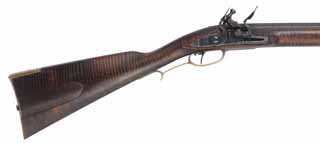
|
York County Longrifle , .40 caliber, 42" swamped Colerain barrel, Chambers' flint lock, curly maple, brass, percussion conversion, used
Constructed in the manner of those longrifles originally built in York County, Pennsylvania, this rifle is stocked with a piece of extra fancy curly maple with tight stripes running its entire length. The beautiful maple stock is trimmed in brass furniture, and the buttstock is fitted with a sliding wooden patchbox. The .40 caliber swamped Colerain
|
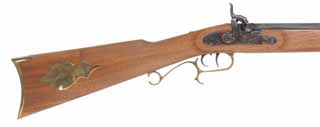
|
T/C Hawken Rifle , .54 caliber, 28" barrel, percussion, walnut stock, brass trim, excellent, by Thompson Center Arms
This .54 caliber Thompson Center Hawken percussion rifle is very lightly used. This factory finished rifle is stocked in American black walnut with brass furniture, and blued 28" straight octagon barrel. The bore is bright and has been well maintained. Weight is 8.8 pounds, and with a trigger reach of 14-1/4", the rifle is perfectly setup for today
|
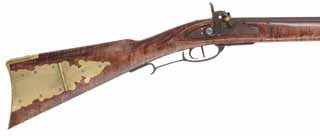
|
Fullstock Longrifle , .45 caliber, 42" Kelly barrel, Siler percussion, maple, brass & iron, used, by P. Sheets
This longrifle is trimmed in a mixture of brass and iron, is stocked in curly maple, and features a .45 caliber straight octagon Kelly barrel. This rifle is a mixture of parts and styles, and represents a flint rifle later converted to percussion. This piece is signed on the top flat of the barrel P. Sheets . It is offered as used with a bright we
|
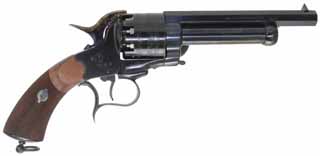
|
LeMat Cavalry Revolver , .44 caliber, .64 caliber smoothbore, 6-3/4" barrel, percussion, blued, stainless nipples, as-new in box, by Pietta
Designed by a French inventor, Alexander LeMat and Confederate General Beauregard working together to create the ultimate military sidearm, this revolver was to become a favorite of many Confederate Naval and Infantry officers. The first models were made by a Philadelphia gunsmith. But due to the war, the production was moved to France where the gu
|